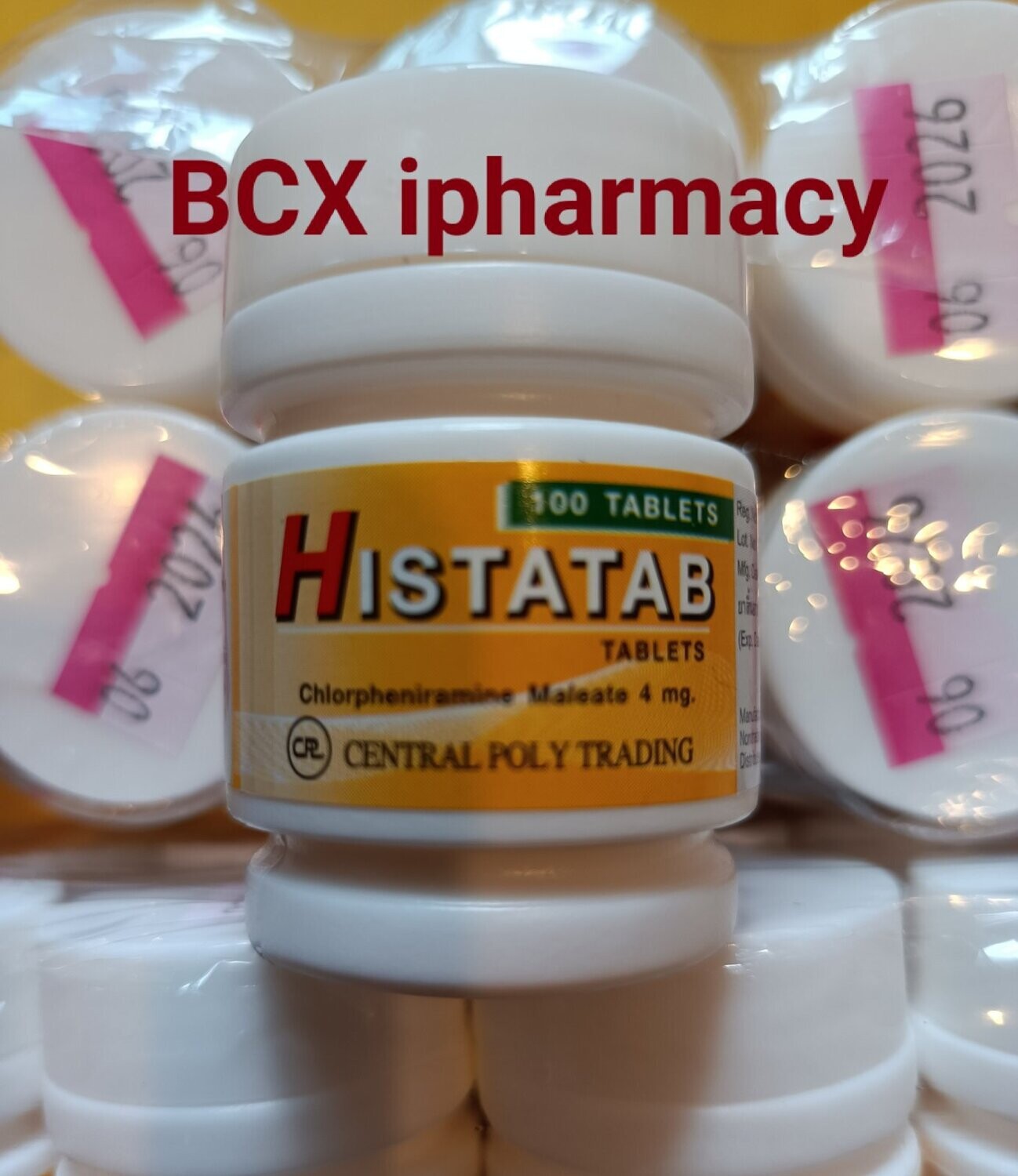Histatab 4mg( Chlopheniramine meleate) အလာဂျီ သက်သာဆေး
Ks900.00
Selling by bot
In stock: 17 available
Product Details
|
Indications and Dosage
Oral
Allergic conditions
Adult: 4 mg 4-6 hourly. Max: 24 mg daily.
Child: 1-2 years 1 mg bid. Max: 4 mg daily. 2-5 years 1 mg 4-6 hourly. Max: 6 mg daily. 6-12 years 2 mg 4-6 hourly. Max: 12 mg daily. >12 years Same as adult dose. Elderly: Dose reduction may be needed. Max: 12 mg daily. Parenteral Allergic conditions
Adult: 10-20 mg via IM, SC or slow IV inj over 1 minute. Max: 40 mg daily.
Child: 1 month to 1 year 0.25 mg/kg. >1-5 years 2.5-5 mg. 6-12 years 5-10 mg. >12 years Same as adult dose. |
|
Administration
May be taken with or without food.
|
|
Incompatibility
Incompatible with Ca chloride, kanamycin sulfate, noradrenaline acid tartrate, pentobarbital Na, and meglumine adipiodone.
|
|
Contraindications
Acute asthma, narrow-angle glaucoma, bladder neck obstruction, symptomatic prostate hypertrophy, stenosing peptic ulcer. Concomitant or within 14 days of MAOI use.
|
|
Special Precautions
Patient with epilepsy, increased intra-ocular pressure, glaucoma, prostatic hyperthrophy, severe CV disease (e.g. ischaemic heart disease, hypertension), urinary retention, pyloroduodenal obstruction, bronchitis, bronchiectasis, thyrotoxicosis. Children and elderly. Pregnancy and lactation.
|
|
Adverse Reactions
Significant: CNS depression.
Cardiac disorders: Palpitations, tachycardia. Eye disorders: Blurred vision, diplopia. Gastrointestinal disorders: Nausea, dry mouth, abdominal pain, diarrhoea. General disorders and administration site conditions: Fatigue. Investigations: Weight gain. Metabolism and nutrition disorders: Anorexia. Musculoskeletal and connective tissue disorders: Arthralgia. Nervous system disorders: Sedation, disturbance in attention, abnormal coordination, dizziness, headache, excitability. Psychiatric disorders: Somnolence. Renal and urinary disorders: Urinary retention, polyuria. Respiratory, thoracic and mediastinal disorders: Pharyngitis. |
|
Patient Counseling Information
This drug may cause drowsiness, dizziness, blurred vision and psychomotor impairment, if affected, do not drive or operate machinery.
|
|
Overdosage
Symptoms: Sedation, paradoxical excitation of the CNS, toxic psychosis, apnoea, convulsions, dystonic reactions, cardiovascular collapse during arrhythmias. Management: Symptomatic and supportive treatment. May employ activated charcoal. Treat convulsions with IV diazepam. My use haemoperfusion in severe cases.
|
|
Drug Interactions
May enhance sedative effect of hypnotics, anxiolytics, sedatives, opioid analgesics and neuroleptics. May inhibit phenytoin metabolism which may lead to phenytoin toxicity.
Potentially Fatal: Increased anticholinergic effects with MAOIs. |
|
Food Interaction
Increased CNS depression with alcohol.
|
|
Lab Interference
May react to skin test antigen, suppressing the wheal and flare reaction.
|
|
Action
Description: Chlorphenamine is an antihistamine which competitively inhibits histamine H1- receptor in the gastrointestinal and respiratory tract and blood vessels. Thus, prevents the release of histamine, prostaglandins and leukotrienes and prevents the migration of inflammatory mediators.
Synonym: Chlorpheniramine Onset: Within 30 minutes. Duration: 4-6 hours. Pharmacokinetics: Absorption: Readily absorbs from the gastrointestinal tract. Bioavailability: 25-50%. Time to peak plasma concentration: 2-3 hours. Distribution: Widely distributed in the body and CNS. Enters breast milk. Volume of distribution: 6-12L/kg. Plasma protein binding: Approx 70%. Metabolism: Undergoes extensive first-pass metabolism in the liver t by CYP450 enzymes to active and inactive metabolites. Excretion: Via urine (22% as unchanged drug); faeces (trace amounts). Elimination half-life: 2-43 hours. |
Histatab 4mg( Chlopheniramine meleate) အလာဂျီ သက်သာဆေး
Display prices in:MMK
